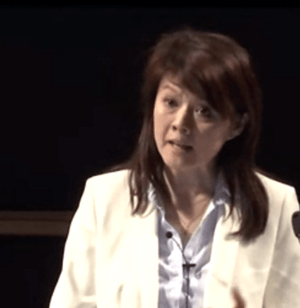Rose Amal facts for kids
Quick facts for kids
Prof.
Rose Amal
AC FAA FTSE FIChemE FIEAust
|
|
|---|---|

June 2014
|
|
| Born | 1965 (age 59–60) Medan, Indonesia
|
| Nationality | Australian |
| Alma mater | UNSW |
| Title | Scientia Professor |
| Awards |
|
| Scientific career | |
| Thesis | Fractal structure and kinetics of aggregating colloidal hematite (1991) |
Rose Amal AC (born 1965) is a super smart Australian chemical engineer. She is a special professor at the University of New South Wales (UNSW) in Australia. Professor Amal leads a team called the Particles and Catalysis Research Group. This group studies tiny particles and how they can speed up chemical reactions.
Before this, from 2010 to 2013, she was the director of another important research center. This center focused on tiny materials called nanomaterials. From 2012 to 2015, she was named one of Australia's top 100 most influential engineers. In 2014, she made history. She became the first woman engineer to join the Australian Academy of Science.
Becoming an Engineer
Rose Amal was born in Medan, Indonesia, in 1965. She moved to Australia in October 1983 after finishing high school. She studied Chemical Engineering at the University of New South Wales (UNSW). In 1988, she earned her Bachelor of Engineering degree. She then continued her studies and received her PhD in chemical engineering in 1991.
In 1992, she started working as a lecturer at UNSW. By 1997, she became the director of a research center. This center later became the Particles and Catalysis Research Group. She worked very hard and became a full professor in 2004.
Amazing Research
Professor Amal's work focuses on very small things. She studies how tiny particles group together. She also researches photocatalysis, which uses light to speed up chemical reactions. Another area is making nanoparticles, which are super tiny materials.
Her research helps solve big problems like water pollution and air quality. It also helps create clean energy technologies. She is very interested in designing nanomaterials. These materials help turn solar energy and chemicals into useful energy.
One of her most important works is about how nanoparticles help in photocatalysis. She also studied a special material that helps split water using light. This can create clean hydrogen fuel.
When she joined the Australian Academy of Science, they said:
Professor Amal is a world leader in photocatalysis. Her research helps with energy and water, which are very important resources. Her work provides a clean way to use solar energy to clean water or make hydrogen. Her special materials are very active and can be used again. This has helped make photocatalysis useful for large water treatment plants.
Awards and Recognition
Professor Amal has received many honors for her important work. From 2007 to 2009, she was part of a special group that helps decide on research funding. She also led the ARC Centre of Excellence for Functional Nanomaterials from 2010 to 2013. She is a Fellow of both the Australian Academy of Technological Sciences and Engineering and the Australian Academy of Science.
Besides being named one of Australia's top 100 most influential engineers several times, she has won many awards:
- 2008 Freehills Innovation Award in Chemical Engineering
- 2011 NSW Science and Engineering Award – Emerging Research
- 2012 Judy Raper Women in Engineering Leadership Award
- 2012 ExxonMobil Award
- 2014 Australian Laureate Fellowship
- 2019 NSW Scientist of the Year
- 2021 James Cook Medal
In 2018, Professor Amal was given a very high honor. She was named a Companion of the Order of Australia. This award recognizes her outstanding service to science and engineering.

